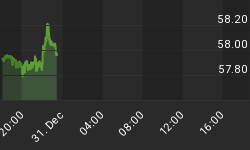This week, national attention was fixated on JetBlue flight attendant Steven Slater, whose bold, creative, and controversial exit strategy could revitalize his future prospects. Not nearly as noticed was the Federal Reserve's decision on Tuesday to avoid finding an exit strategy for its own never-ending career trap. Unfortunately, the Fed's choices affect our lives much more than Slater's.
Just a few weeks ago, pundits were asking how Ben Bernanke would shrink the Fed's bloated post-crisis balance sheet. But in its August 10th decision, the Fed signaled that it would "recycle" its debt holdings; in other words, there would be no exit strategy for the foreseeable future. Given the fact that monetary stimulus will not only fail to spark a genuine recovery, but create a never-ending need for successively larger doses, Bernanke should grab a few beers and head for the nearest available emergency slide.
About a year ago, economic forecasters claiming insight into Fed deliberations spread the word that the central bank had devised a methodical exit strategy to unwind its balance sheet. The only question they thought worth discussing was when the plan would begin. Some even speculated that it already secretly had. In a July 2009 commentary entitled "No Exit for Ben," I argued that Bernanke and his cohorts never had any serious intention of implementing such a policy. I suggested that the Fed would continue to play the role of money-pusher - making sure the addicts were never denied a fix, even if an overdose threatened.
Like their patrons in the White House and on Capitol Hill, the Fed is totally dedicated to postponing the short-term consequences that would result from breaking America's addiction to cheap money and easy credit. Compared to this imperative, the long-term economic health of the country barely gets a second thought.
Any moves by the Fed to shrink its balance sheet, thereby withdrawing liquidity from the real estate market, would add significant downward pressure to home prices. Lower house prices would bring on an additional wave of foreclosures, which would then force many previously bailed-out financial institutions back into bankruptcy. (With foreclosure data growing more ominous despite the current stability in house prices, it looks like these institutions are headed back toward bankruptcy even with Fed support.)
To prevent this economic chain-reaction, the Fed will step in with "quantitative easing" as soon as it becomes obvious that the Administration's stimulus-fueled "recovery" of the past three quarters is fading. The problem is that each round of stimulus, as with each hit of an addictive drug, requires ever larger doses to produce the same result. The more leveraged an economy becomes, the bigger the lever required to move it. So the more the Fed stimulates now, the more it will be forced to stimulate later. The only exit strategy this course allows is an overdose - hyperinflation.
To counter these concerns, Bernanke and his supporters have said that their stimulus will be withdrawn as soon as the recovery takes hold in earnest. This misses the point that any "growth" created by stimulus is totally dependent on stimulus to continue. The "recovery" will end as soon as the stimulus prop is removed.
Those who fear a double dip recession are justified in their concerns, but they are also missing the big picture. The 2008 recession never ended. It was merely interrupted by trillions of dollars of stimulus that purchased GDP "growth" with borrowed money. But as the bills come due, GDP should now contract so we can settle up - but instead we'll take on more debt.
I expect the coming doses of quantitative easing will finally spark adverse reactions, first in the dollar and later in the bond market. When a falling dollar forces consumer prices and long-term interest rates to rise, the Fed's actions will be rendered impotent. The Open Markets Committee will have to make a horrific choice: fight inflation by tightening policy into a weakening economy, or fight recession by allowing inflation to burn out of control. I think it's obvious that they will choose inflation, all the while pretending that it doesn't exist.
Unfortunately, no one at the Fed has the honesty and courage to suffer the short-term shock that would accompany any meaningful exit strategy. Withdrawing liquidity and shrinking the Fed's bloated balance sheet would no doubt bring on a severe contraction in GDP, but the moves would also enable the US economy to form a solid foundation of savings, capital investment, and industrial production upon which a real recovery could be built. By contrast, more stimulus simply magnifies the imbalances, including excessive government spending, too much consumption, inadequate production, and artificially elevated asset prices. After decades of abuse, it's time for the Fed to take make a dramatic exit, because the US economy can't take it anymore.
For in-depth analysis of this and other investment topics, subscribe to The Global Investor, Peter Schiff's free newsletter. Click here for more information.
Click here to download Peter's latest Special Report: My Five Favorite Gold & Silver Mining Stocks.
Be sure to pick up a copy of Peter Schiff's just-released economic fable, How an Economy Grows and Why It Crashes.
















